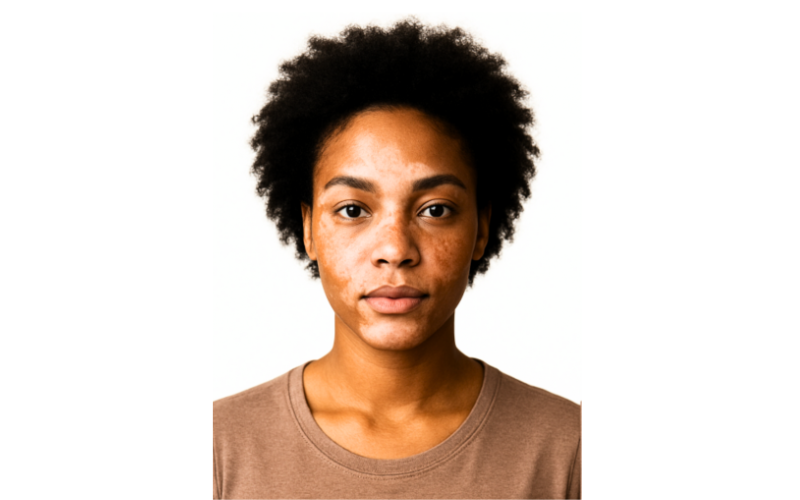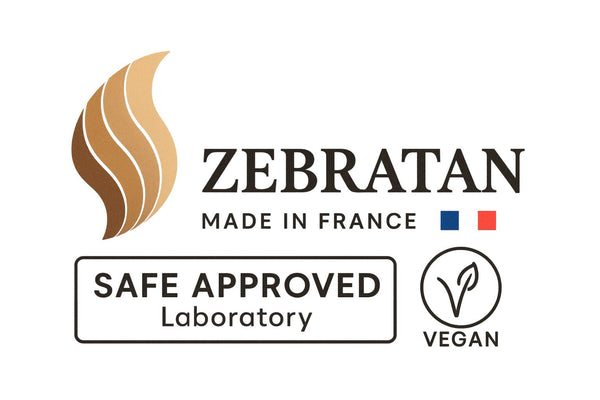
The different types of vitiligo
Share
The different types of vitiligo
Vitiligo is a skin condition characterized by the appearance of depigmented areas due to the disappearance of melanocytes, the cells responsible for melanin production. This loss of pigmentation results in white areas on the skin. Vitiligo affects approximately 0.5 to 2% of the world's population, regardless of age, gender, or ethnicity.
There are several types of vitiligo , which differ in their location, progression, and response to treatment. Knowing which type you have is essential to understanding its progression and considering treatment options, including vitiligo camouflage solutions such as tinted lotions or special vitiligo makeup .
Generalized (non-segmental) vitiligo
This is the most common form, accounting for up to 90% of cases. The depigmented areas appear symmetrically on both sides of the body: on both hands, both knees, around the eyes, or on other parts of the face and body. Its progression is often gradual, with phases where the depigmented areas expand and other periods of stability.
There are several subtypes. Vitiligo vulgaris, with depigmented areas scattered across different parts of the body. Acrofacial vitiligo, which mainly affects the face and extremities such as the fingers and toes. Finally, vitiligo universalis, which is much rarer, extends over almost the entire body surface.
Segmental vitiligo
This form manifests as depigmented areas located on one side of the body: an arm, a leg, half of the face. It often occurs earlier, in childhood or adolescence, and its onset is generally rapid. Unlike generalized vitiligo, segmental vitiligo tends to stabilize after one or two years. It may respond more favorably to treatments such as phototherapy.
Localized or focal vitiligo
In this case, only a few limited areas are depigmented, without symmetry or rapid spread. This form can remain stable for many years or evolve into generalized vitiligo.
Mixed vitiligo
It combines in the same person areas typical of segmental vitiligo and others corresponding to generalized vitiligo. It is a more complex form to treat because the two developments coexist.
The particular forms
Some variants have specific appearances. Trichrome vitiligo shows three shades of skin: depigmented, lighter than normal, and then normal. Quadrichrome vitiligo has four, and pentachrome vitiligo even includes a dark brown area. There is also mucosal vitiligo, which affects the lips or genitals, and punctate vitiligo, characterized by small, round, white areas scattered throughout.
Conclusion
Vitiligo is not a uniform disease. There are several forms, ranging from a few small depigmented areas to almost complete depigmentation. Identifying the type of vitiligo allows the dermatologist to better inform the patient and adapt the proposed solutions, whether medical treatments or cosmetic solutions to camouflage vitiligo . Innovative products like Zebratan lotion allow you to regain a more even complexion gradually and naturally, without the effect of foundation and suitable for women, men and even children from 3 years old.
